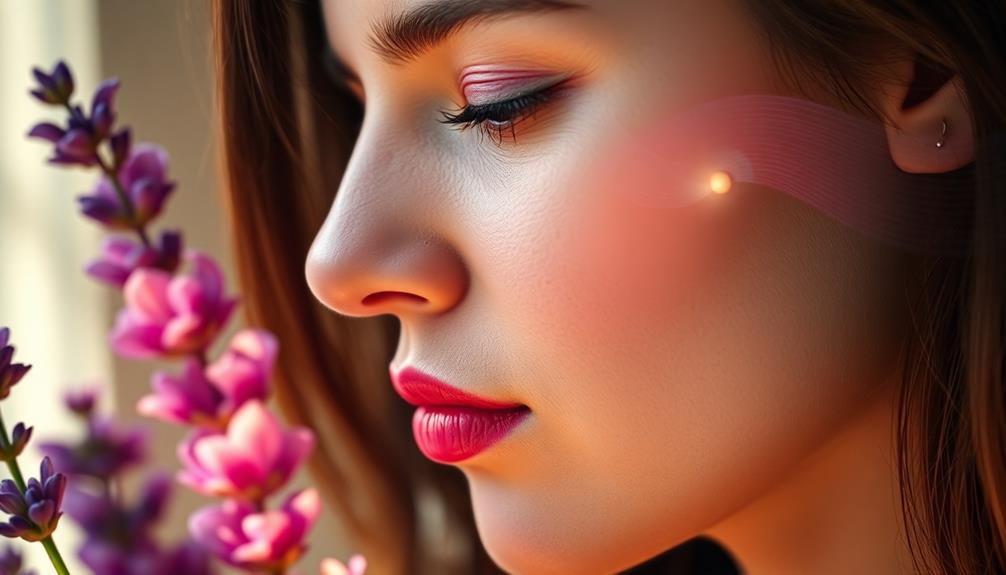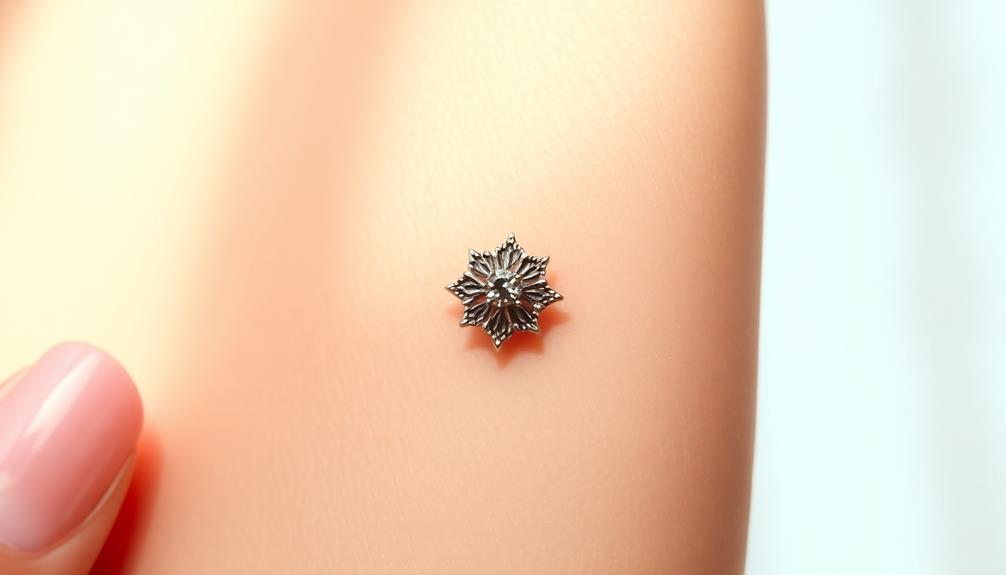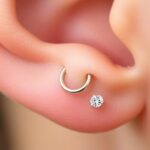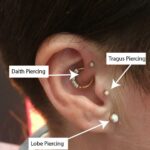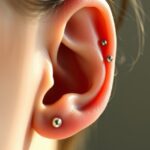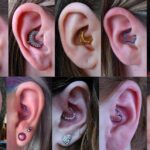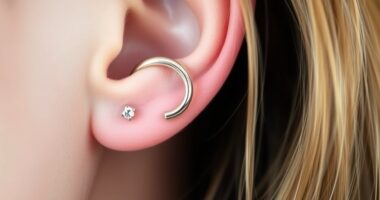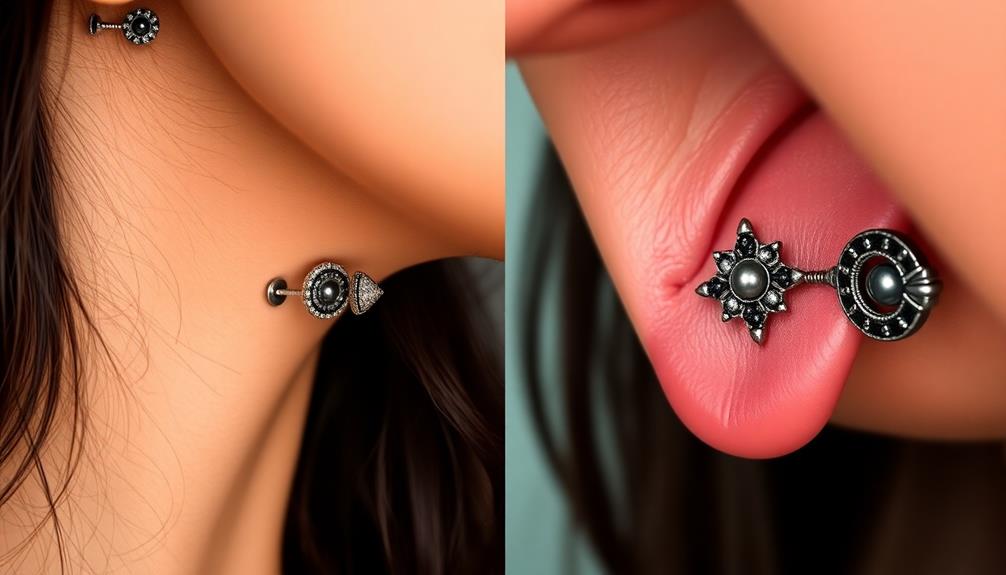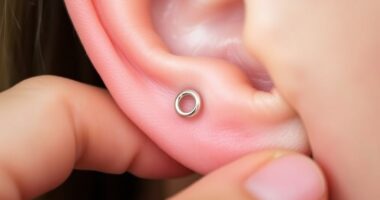Daith piercings might seem like an appealing option for migraine relief, given their location near acupuncture points. Some people report reduced migraine frequency after getting one, but scientific evidence is limited and often points to the placebo effect. Medical experts recommend established migraine treatments instead of relying solely on piercings, as complications from cartilage piercings can occur. While the idea is intriguing, the results can be mixed, and experiences vary widely. If you're curious about the specifics of this trend and alternative treatments, there's more to explore on the topic.
Key Takeaways
- Daith piercings are thought to relieve migraines by stimulating acupuncture points, but scientific evidence supporting this claim is limited and inconclusive.
- Anecdotal reports suggest mixed outcomes, with some individuals experiencing relief while others see no benefit, highlighting variability in responses.
- The American Migraine Foundation indicates that any relief may be due to the placebo effect rather than physiological changes from the piercing.
- Complications from daith piercings can occur, including infections and skin reactions, which warrant caution despite unproven benefits.
- Established migraine treatments, such as dietary adjustments and stress management, are recommended over daith piercings for proven effectiveness.
What Is a Daith Piercing?
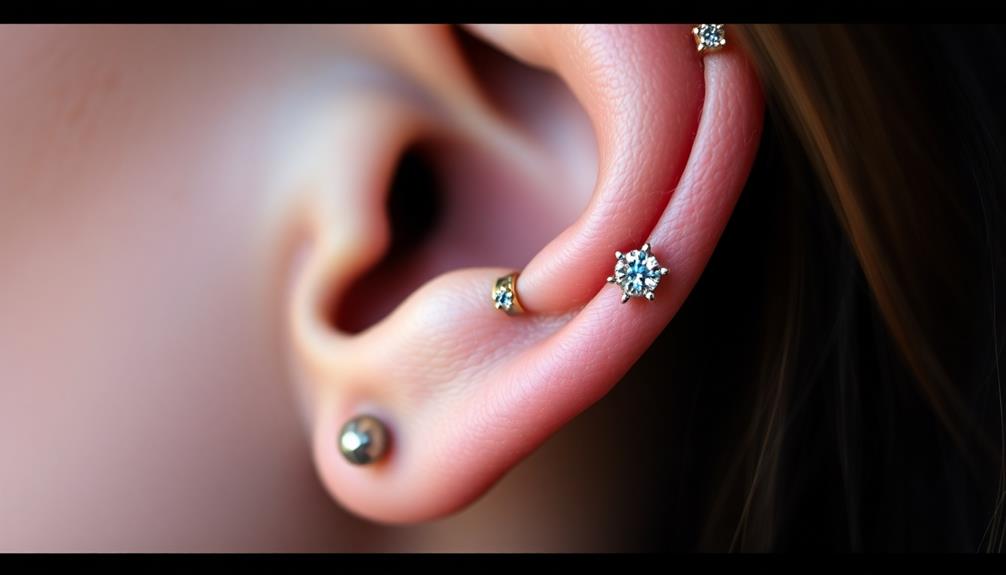
If you're considering a daith piercing, it's important to know exactly where it's located. This type of piercing sits in the innermost cartilage fold of your ear, right at the entrance of the ear canal.
Unlike standard lobe piercings, a daith piercing involves a bit more precision and skill. Because it pierces through cartilage, finding a skilled piercer is vital for an accurate and successful procedure.
Over the past 20 years, daith piercings have gained popularity among those exploring alternative methods for relief from various ailments. While many people choose this style for its unique aesthetic, some believe it might help with migraine symptoms.
However, it's important to remember that this claim lacks scientific backing and is primarily viewed as a cosmetic choice.
Once you get a daith piercing, the healing process can take several months. During this time, you'll need to maintain proper care and hygiene to avoid complications.
If you're ready to take the plunge, understanding the specifics of the daith piercing will help you make an informed decision.
How Does It Relate to Migraines?

Many people curious about daith piercings often wonder how they might relate to migraines. Located in the cartilage fold above the ear canal, daith piercings are thought to connect with acupuncture pressure points that could influence migraine symptoms. Proponents believe the constant compression from the earring stimulates the vagus nerve, potentially blocking pain receptors similar to acupuncture methods.
However, scientific evidence supporting these claims remains limited. The actual daith piercing location is about 1 cm away from the acupuncture point specifically used for migraine treatment, raising questions about its effectiveness.
Here's a quick comparison of the concepts:
| Aspect | Daith Piercings |
|---|---|
| Potential Mechanism | Acupuncture-like pressure |
| Evidence | Lacks substantial research |
| Perceived Relief | Likely due to placebo effect |
The American Migraine Foundation emphasizes that any relief you might experience from daith piercings is likely attributed to the placebo effect rather than a proven physiological benefit. So, while daith piercings may seem like a promising option, their actual ability to help with migraines remains uncertain.
Can a Daith Piercing Help?
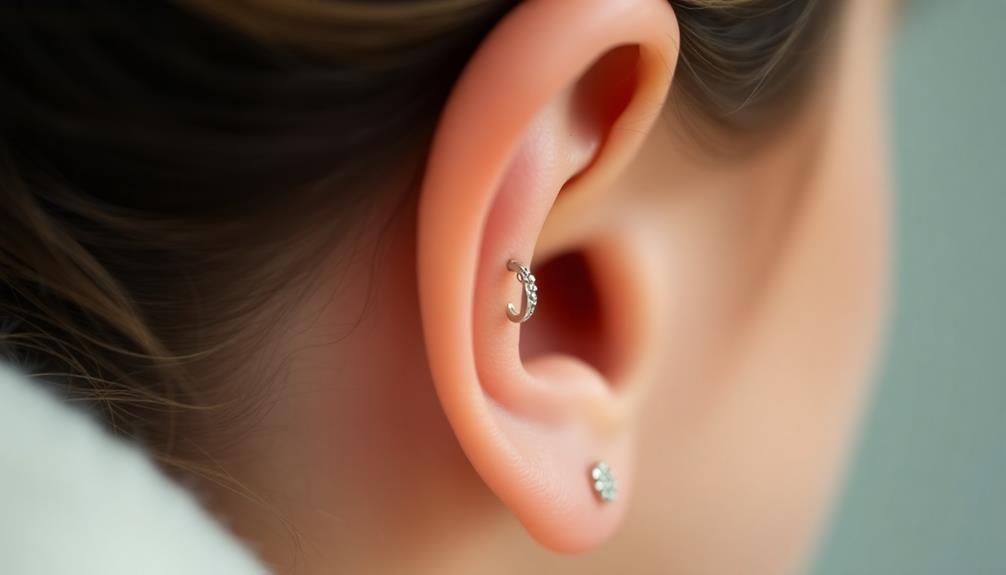
Can a daith piercing truly help with migraines? Many people believe that getting a daith piercing can serve as an effective treatment for migraines by stimulating a pressure point in the ear. The idea is similar to acupuncture, which targets specific points to relieve pain.
However, while some individuals report a reduction in migraine frequency after the procedure, scientific evidence supporting this claim is lacking.
Interestingly, the actual location of the daith piercing is about 1 cm away from the acupuncture point typically targeted for migraine relief. This raises questions about whether the daith piercing can genuinely provide the intended benefits.
Furthermore, the American Migraine Foundation suggests that any relief experienced may be attributed to the placebo effect rather than a direct therapeutic mechanism.
It's also worth noting that over one-third of people who get a daith piercing report complications such as infections or allergic reactions. Given these risks, it's important to weigh the potential drawbacks against any perceived benefits.
Ultimately, while a daith piercing might seem appealing, it's vital to approach this option with caution and consider other proven migraine treatments.
Risks of Daith Piercings

Getting a daith piercing comes with notable risks that you should consider before making a decision. Over one-third of individuals who opt for this piercing experience complications, including serious infections such as cellulitis and exposure to bloodborne pathogens.
The nature of cartilage piercings makes them particularly prone to infections, which can greatly impact your overall health.
Additionally, you might encounter skin reactions like dermatitis or allergic responses, and there's always the risk of developing keloid scars, which can grow considerably large and be unsightly.
If you're hoping for migraine relief, keep in mind that the piercing procedure can lead to persistent pain or even worsen your migraines, alongside slow healing.
Health professionals typically don't recommend daith piercings for treating migraines due to the unproven benefits and the potential for placebo effects.
Instead, they emphasize the importance of relying on established medical treatments. Before proceeding, weigh the risks of daith piercings carefully against any potential benefits you might anticipate.
Understanding these complications is essential in making an informed choice.
Patient Experiences and Testimonials

For those considering a daith piercing as a potential remedy for migraines, patient experiences and testimonials offer a mixed bag of insights. Many individuals in online forums report significant pain relief and a reduction in migraine frequency after getting the piercing.
For instance, a 54-year-old male shared that his daith piercing led to fewer migraine attacks and improved quality of life, even with a history of treatment-resistant migraines.
However, not all experiences are straightforward. Some testimonials suggest that the perceived benefits might be linked to the placebo effect, meaning that psychological factors could play a significant role in their relief.
While anecdotal evidence supports the idea that daith piercings may help some migraine patients, it's important to recognize that medical experts stress there's no scientific consensus to back these claims.
If you're contemplating a daith piercing for migraine relief, it's vital to consult with healthcare professionals.
Since patient experiences vary widely, understanding the potential risks and benefits can help you make an informed decision about whether this treatment is right for you.
Scientific Evidence and Research
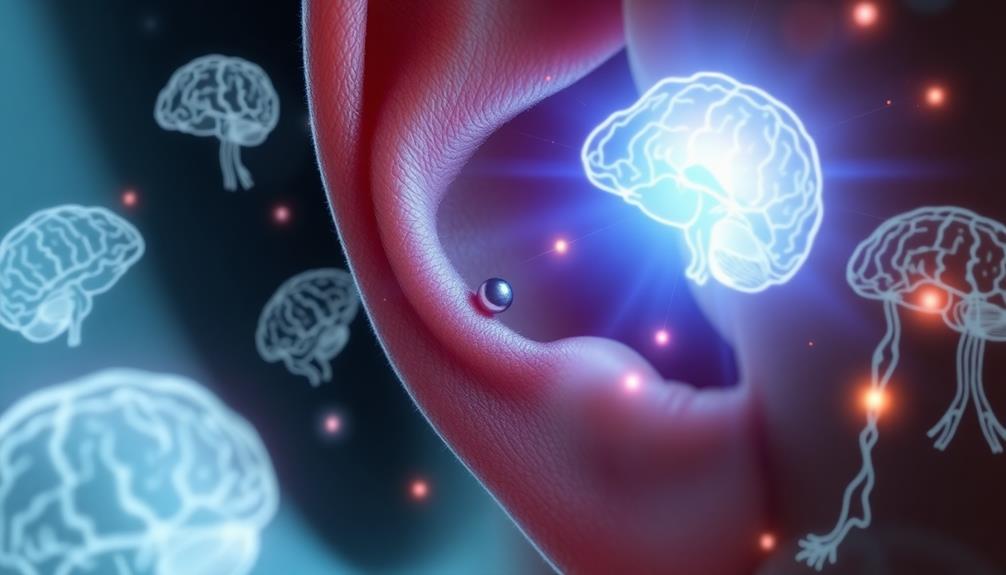
Despite the numerous anecdotal claims surrounding daith piercings and migraine relief, scientific evidence remains scant. The American Migraine Foundation points out that any reported relief largely stems from the placebo effect rather than actual efficacy.
While a 2017 case study mentioned symptom improvement after a daith piercing, researchers stressed the urgent need for controlled clinical trials to back up those claims.
Another concern arises from the location of the daith piercing—it sits about 1 cm away from the acupuncture point typically linked to migraine relief. This raises further doubts about its effectiveness in migraine management.
Although some individuals share stories of reduced migraine frequency after getting pierced, these experiences lack empirical support and robust scientific validation.
Experts generally advise against relying on daith piercings as a migraine treatment. Instead, they recommend established medical therapies and alternative treatments, like acupuncture, which have demonstrated effectiveness in managing migraine symptoms.
If you're exploring options for relief, it's essential to take into account evidence-based approaches rather than unproven methods like daith piercings.
Alternative Treatments for Migraines
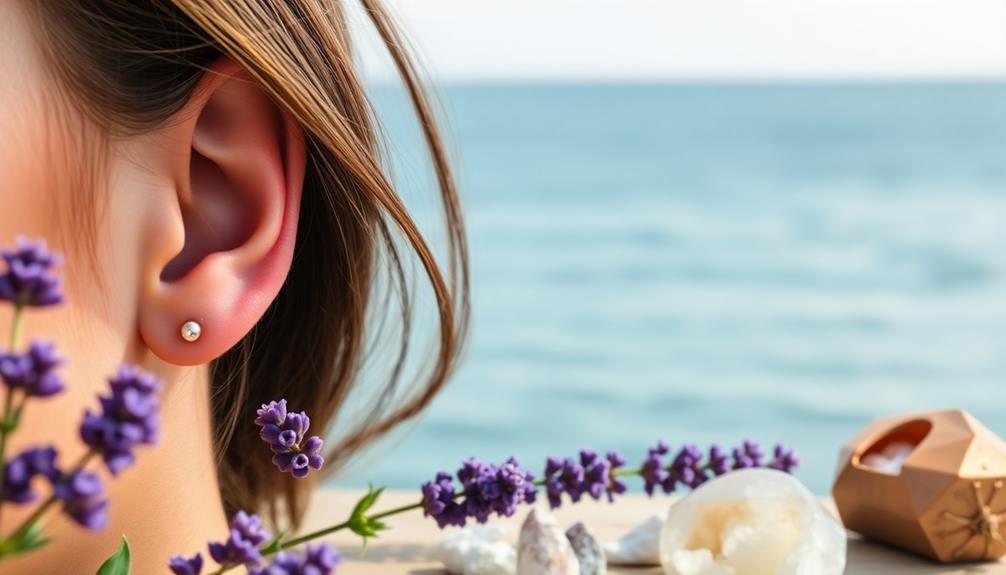
You might consider dietary adjustments and stress management techniques as effective ways to tackle migraines.
A balanced diet rich in fruits, vegetables, and whole grains can aid in overall health and potentially reduce migraine triggers, while regular physical activity can help manage stress levels best lifestyle for men's health.
By identifying and avoiding trigger foods, you can potentially reduce the frequency of your attacks.
Additionally, incorporating stress-relief practices into your routine can help manage pain and enhance your overall well-being.
Dietary Adjustments
Many migraine sufferers find that dietary adjustments can considerably impact the frequency and intensity of their headaches. By identifying and avoiding trigger foods, you can potentially reduce migraine pain. Common culprits include aged cheese, processed meats, alcohol, and caffeine.
To help you make effective dietary changes, consider the following table:
| Food Category | Recommended Foods | Foods to Avoid |
|---|---|---|
| Fruits & Vegetables | Spinach, bananas | Citrus fruits |
| Healthy Fats | Salmon, flaxseeds | Processed oils |
| Hydration | Water, herbal teas | Sugary drinks |
Increasing your magnesium intake through foods like nuts and whole grains may also help in decreasing migraine frequency. Staying hydrated is essential; aim to drink enough water daily to prevent dehydration, which can trigger attacks.
Additionally, trying an elimination diet can assist you in pinpointing specific foods that may be causing migraines. By systematically removing and reintroducing foods, you can observe their effects on your headaches. Making these dietary adjustments could be a key step in managing your migraine symptoms effectively.
Stress Management Techniques
Alongside dietary adjustments, managing stress effectively can play an essential role in reducing migraine frequency and intensity. Integrating stress management techniques into your daily routine can greatly impact how often you experience migraine headaches.
Mindfulness meditation, for instance, promotes relaxation and helps lower overall stress levels, which can reduce the frequency of migraine attacks. Additionally, exploring natural remedies alongside conventional medications can further support your migraine management strategy.
Regular physical activity is another powerful tool. Engaging in exercise not only lowers tension but also combats common migraine triggers. It's a natural way to keep stress at bay.
Additionally, cognitive-behavioral therapy (CBT) can be beneficial. It teaches you coping strategies and helps alter negative thought patterns that may contribute to stress-related migraines.
You might also find deep-breathing exercises helpful for immediate stress relief. They can alleviate tension that often leads to migraines.
Finally, consider incorporating practices like yoga or progressive muscle relaxation into your routine—both have shown positive effects on stress reduction and can enhance your quality of life.
Caring for Your Daith Piercing

Caring for your daith piercing is essential for a smooth healing process.
You'll want to maintain proper hygiene and keep an eye out for any signs of infection.
Understanding the healing timeline and what to expect can help guarantee your piercing stays healthy and trouble-free.
Proper Hygiene Practices
To guarantee your daith piercing heals properly and remains infection-free, it's vital to maintain proper hygiene practices. Always wash your hands thoroughly with soap and water before touching your daith piercing or any jewelry. This simple step can markedly reduce the risk of introducing harmful bacteria.
Make it a habit to clean the area around the piercing daily with mild soap and water. This helps maintain hygiene and prevents infections. You should keep the earring in for at least 8 weeks to confirm the hole stays open and allows for proper healing.
During this time, gently twist or jiggle the earring each day to prevent closure and check that the piercing is healing correctly.
It's important to monitor your piercing for any signs of infection, such as redness, swelling, or discharge. If you notice any of these symptoms, don't hesitate to consult a doctor.
Healing Timeline Expectations
Maintaining proper hygiene practices sets the foundation for a successful healing journey after getting your daith piercing.
The healing time for this type of piercing can vary considerably, ranging from 3 to 12 months. Your individual aftercare routine and how your body responds to the piercing will influence this timeline.
To guarantee a smooth healing process, keep these points in mind:
- Keep the earring in place for at least 8 weeks to prevent the hole from closing.
- Wash your ear daily with mild soap and water to maintain hygiene.
- Avoid twisting or jiggling the earring excessively, as it may irritate the piercing.
- Monitor your piercing closely for any unusual symptoms.
Signs of Infection
Recognizing the signs of infection is vital for guaranteeing the health of your daith piercing. Watch for increased redness, swelling, or warmth around the piercing site, as these can indicate an infection. If you notice pus or any unusual discharge, it's time to take action. Persistent pain that worsens over time, or doesn't improve despite your aftercare routine, is another red flag.
Additionally, if you experience fever, chills, or a general feeling of malaise alongside these symptoms, it could suggest a more serious systemic infection. Don't ignore these signs. If you see a keloid forming—a raised scar tissue around the piercing—it may also signal irritation or an infection that requires immediate attention.
Regularly monitoring your daith piercing for any changes in appearance or sensation is essential. If you observe any signs of infection, consulting a healthcare professional promptly is highly recommended.
Taking swift action can help prevent complications and guarantee the longevity and health of your piercing. Always prioritize your well-being, and don't hesitate to seek medical advice when in doubt.
Professional Piercing Recommendations

When considering a daith piercing, it's important to seek out a licensed and experienced professional who specializes in cartilage piercings. A skilled professional piercer not only guarantees the procedure is performed correctly but also minimizes potential complications.
Before going ahead, you should consult a healthcare provider, especially if you have any underlying health conditions or a history of ear problems.
Here are some recommendations to keep in mind:
- Verify the studio's cleanliness and sterilization practices to reduce infection risks.
- Make sure the professional explains the procedure, potential risks, and aftercare requirements clearly.
- Choose appropriate jewelry made from materials like titanium or surgical stainless steel, which are safer for healing.
- Look for reviews or testimonials to gauge the piercer's experience with daith piercings.
Making informed choices is vital when it comes to body modifications. By following these guidelines, you can enhance your experience and potentially reduce complications associated with the daith piercing.
Prioritize your health and well-being throughout the process, and remember that proper care and professional guidance can lead to a more successful outcome.
Ethical Considerations in Research

When researching daith piercings for migraine relief, you need to prioritize informed consent from participants to protect their rights and privacy.
Transparency is key, as it builds trust and guarantees everyone understands the study's purpose and risks involved.
Additionally, addressing any potential conflicts of interest is essential for maintaining integrity and credibility in your findings.
Informed Consent Importance
Informed consent is essential for guaranteeing ethical integrity in research, especially in studies involving medical procedures like daith piercings. You need to understand that informed consent is more than just a form to sign; it's about being fully aware of what you're getting into.
Before you decide to participate, researchers must provide clear information about the study's purpose, procedures, risks, and potential benefits.
Here are some key points to take into account regarding informed consent:
- Participants should be informed voluntarily, without any pressure or coercion.
- Clear and comprehensible information enables you to make an informed decision.
- Written consent serves as documentation that you understand the implications of your participation.
- Ethical guidelines and oversight from an institutional review board (IRB) guarantee that your rights and welfare are protected.
Transparency in Research
Transparency in research is fundamental for fostering trust between researchers and participants. When exploring alternative treatments like daith piercings for migraines, maintaining ethical standards is imperative. Researchers must obtain approval from ethics committees before conducting a clinical trial, guaranteeing that the rights and welfare of participants are protected throughout the study.
Additionally, following a structured testing process is essential for identifying the effectiveness of such treatments, much like the methods used in software quality assurance.
Informed consent is an essential part of this process, requiring you to receive clear information about the study's purpose, procedures, and potential risks. This guarantees that you fully understand what you're consenting to, fostering a sense of security and trust in the research.
Moreover, transparency in methodologies and reporting results is crucial for research integrity. When researchers openly share their methods and findings, it allows for reproducibility and peer review, which are vital for validating the effects of daith piercings on migraines.
This openness also extends to the publication of research, where accurate representation of contributions is key.
Potential Conflicts of Interest
Researchers' commitment to ethical considerations is essential when examining the effects of daith piercings on migraine relief. Ensuring transparency in authorship and addressing potential conflicts of interest is fundamental for maintaining the integrity of the research.
Obtaining ethical approval from an Ethics Committee demonstrates adherence to these standards, reinforcing trust in the findings.
Here are important factors to take into account:
- Written informed consent: It's critical to respect patient autonomy and confidentiality before publishing case reports.
- Absence of conflicts of interest: Researchers should disclose any commercial or financial ties that could influence the study's outcomes.
- Collaboration acknowledgment: Recognizing contributions from colleagues and advisors reflects ethical practices and fosters a diverse research environment.
- Ongoing monitoring: Regularly reviewing research practices helps prevent biases and maintains the credibility of the research.
Frequently Asked Questions
Do Daith Piercings Actually Help Migraines?
You might be intrigued by the idea of daith piercings helping migraines, but scientific evidence doesn't support this. Many people report only a placebo effect, and there are risks involved that you should consider carefully.
What Is the Best Ear Piercing for Migraines?
Imagine a compass, pointing you toward relief; however, no specific ear piercing guarantees freedom from migraines. While some swear by certain piercings, you should consult a healthcare professional for proven treatments and personalized advice.
What Are the Cons of the Daith Piercing?
When considering a daith piercing, you should be aware of potential complications, including infections, allergic reactions, and persistent pain. Proper aftercare is essential, as neglecting it can lead to delayed healing and increased risks.
Does a Daith Piercing Have Health Benefits?
A daith piercing might seem appealing for health benefits, but the evidence isn't convincing. You're more likely to face complications like infections than gain any real advantages, so consider established medical treatments instead.
Conclusion
To summarize, while many people swear by daith piercings for migraine relief, scientific evidence is still limited. Notably, a survey found that about 50% of individuals with daith piercings reported a reduction in migraine frequency. However, it's important to weigh the potential risks and consider other treatment options. If you're thinking about getting one, make sure to consult a professional piercer and explore all your alternatives for managing migraines effectively.

